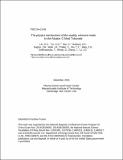| dc.contributor.author | Liu, Z. X. | |
| dc.contributor.author | Xu, X. Q. | |
| dc.contributor.author | Gao, X. | |
| dc.contributor.author | Xia, T. Y. | |
| dc.contributor.author | Zhang, T. | |
| dc.contributor.author | Li, J. G. | |
| dc.contributor.author | Hubbard, Amanda E | |
| dc.contributor.author | Hughes Jr, Jerry | |
| dc.contributor.author | Walk Jr, John R | |
| dc.contributor.author | Theiler, Christian | |
| dc.contributor.author | Baek, Seung Gyou | |
| dc.contributor.author | Golfinopoulos, Theodore | |
| dc.contributor.author | Whyte, Dennis G | |
| dc.date.accessioned | 2018-07-25T18:12:59Z | |
| dc.date.available | 2018-07-25T18:12:59Z | |
| dc.date.issued | 2016-12 | |
| dc.date.submitted | 2016-08 | |
| dc.identifier.issn | 1070-664X | |
| dc.identifier.issn | 1089-7674 | |
| dc.identifier.uri | http://hdl.handle.net/1721.1/117124 | |
| dc.description.abstract | The weakly coherent mode (WCM) in I-mode has been studied by a six-field two-fluid model based on the Braginskii equations under the BOUT++ framework for the first time. The calculations indicate that a tokamak pedestal exhibiting a WCM is linearly unstable to drift Alfven wave (DAW) instabilities and the resistive ballooning mode. The nonlinear simulation shows promising agreement with the experimental measurements of the WCM. The shape of the density spectral and location of the spectral peak of the dominant toroidal number mode n = 20 agrees with the experimental data from reflectometry. The simulated mode propagates in electron diamagnetic direction is consistent with the results from the magnetic probes in the laboratory frame, a large ratio of particle to heat diffusivity is consistent with the distinctive experimental feature of I-mode, and the value of the simulated χeat the edge is in the range of experimental errors of χefffrom the experiment. The prediction of the WCM shows that free energy is mainly provided by the electron pressure gradient, which gives guidance for pursuing future I-mode studies. | en_US |
| dc.publisher | AIP Publishing | en_US |
| dc.relation.isversionof | http://dx.doi.org/10.1063/1.4972088 | en_US |
| dc.rights | Creative Commons Attribution-Noncommercial-Share Alike | en_US |
| dc.rights.uri | http://creativecommons.org/licenses/by-nc-sa/4.0/ | en_US |
| dc.source | MIT Web Domain | en_US |
| dc.title | The physics mechanisms of the weakly coherent mode in the Alcator C-Mod Tokamak | en_US |
| dc.type | Article | en_US |
| dc.identifier.citation | Liu, Z. X. et al. “The Physics Mechanisms of the Weakly Coherent Mode in the Alcator C-Mod Tokamak.” Physics of Plasmas 23, 12 (December 2016): 120703 © 2016 Author(s) | en_US |
| dc.contributor.department | Massachusetts Institute of Technology. Plasma Science and Fusion Center | en_US |
| dc.contributor.mitauthor | Hubbard, Amanda E | |
| dc.contributor.mitauthor | Hughes Jr, Jerry | |
| dc.contributor.mitauthor | Walk Jr, John R | |
| dc.contributor.mitauthor | Theiler, Christian | |
| dc.contributor.mitauthor | Baek, Seung Gyou | |
| dc.contributor.mitauthor | Golfinopoulos, Theodore | |
| dc.contributor.mitauthor | Whyte, Dennis G | |
| dc.relation.journal | Physics of Plasmas | en_US |
| dc.eprint.version | Original manuscript | en_US |
| dc.type.uri | http://purl.org/eprint/type/JournalArticle | en_US |
| eprint.status | http://purl.org/eprint/status/NonPeerReviewed | en_US |
| dc.date.updated | 2018-07-20T18:20:06Z | |
| dspace.orderedauthors | Liu, Z. X.; Xu, X. Q.; Gao, X.; Hubbard, A. E.; Hughes, J. W.; Walk, J. R.; Theiler, C.; Xia, T. Y.; Baek, S. G.; Golfinopoulos, T.; Whyte, D.; Zhang, T.; Li, J. G. | en_US |
| dspace.embargo.terms | N | en_US |
| dc.identifier.orcid | https://orcid.org/0000-0003-4802-4944 | |
| dc.identifier.orcid | https://orcid.org/0000-0001-8324-4227 | |
| dc.identifier.orcid | https://orcid.org/0000-0001-8029-3525 | |
| dc.identifier.orcid | https://orcid.org/0000-0002-0898-5217 | |
| dc.identifier.orcid | https://orcid.org/0000-0002-9001-5606 | |
| mit.license | OPEN_ACCESS_POLICY | en_US |
